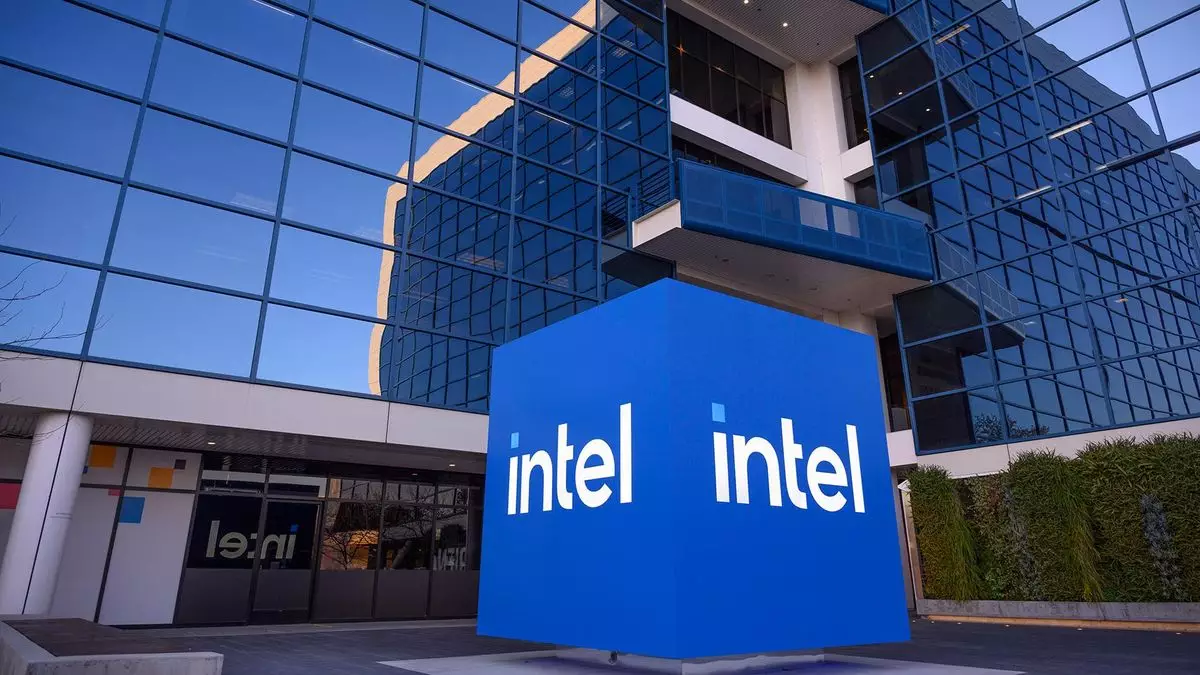The semiconductor industry has long been regarded as a cornerstone of technological advancement, with key players shaping its trajectory. Among these players, Intel has held a prominent position for a quarter of a century, consistently serving as a bellwether for the sector’s health. With its recent removal from the Dow Jones Industrial Average, however, the question arises: what does the future hold for this iconic company?
Intel’s Declining Fortunes
In recent months, Intel’s financial performance has raised concerns among investors and analysts alike. Once a titan of the tech world, its stock has plummeted to around $23 per share—approximately half of its value from just a year ago. This drastic decline in share price is not merely a consequence of market volatility; it’s a reflection of Intel’s struggle to innovate and stay competitive in the fast-paced semiconductor landscape.
The company has reported staggering financial losses quarter after quarter, cumulating in potential losses surpassing $20 billion if current trends continue. This poor financial outcome can be traced back to a string of underperforming products and delays in their release, causing investors to lose confidence. Additionally, the tech industry is seeing a paradigm shift towards artificial intelligence, where companies like Nvidia and AMD are rapidly advancing in both the AI and data-center domains, effectively sidelining Intel in an area where it once dominated.
Market Repositioning and Strategic Missteps
Intel’s withdrawal from the Dow Jones index, a move underpinned by S&P Dow Jones’s aim to realign the index to better reflect the semiconductor industry’s current reality, marks a significant shift. The choice to replace Intel with Nvidia—often referred to as the “AI darling”—not only highlights Intel’s struggles but also indicates a broader market reorientation favoring emerging technologies. Nvidia’s burgeoning role in the AI sector underscores the critical need for legacy firms like Intel to adapt or risk further marginalization.
Intel’s strategy has also manifested in workforce reductions, with 15% of its employees laid off in a concerted effort to cut costs. While such measures are often essential in a corporate environment, workforce optimization without the continued drive for innovation can lead to long-term vulnerabilities. Intel’s recent Arrow Lake processors, while ambitious, have not met expectations in the gaming market, further complicating its path forward.
Despite its current hurdles, it is imperative not to count Intel out entirely. The company benefits from a robust legacy as a prominent U.S. military contractor, which can ensure steady revenue streams despite consumer market volatility. Additionally, Intel is poised to receive funding under the CHIPS and Science Act, aimed at bolstering American semiconductor manufacturing. These factors provide a foundation to help stabilize the company’s financial standing moving forward.
Furthermore, Intel still commands a significant market share in the CPU client sector. With strategic restructuring and a focused effort on product innovation, the potential for recovery remains. Identifying profitable segments, streamlining operations, and possibly divesting from less productive business units may allow Intel to reclaim some of its lost ground.
The resilience of companies like AMD offers a valuable lesson for Intel. AMD’s ability to persevere through challenging conditions in the past showcases the importance of agility and innovation in reclaiming market position. As the industry landscape continues to shift, Intel must learn from competitors’ successes and failures, particularly in the gaming and AI realms.
Moreover, the financial environment has transformed dramatically over the last decade and a half. Intel cannot rely solely on its historical dominance; it must adapt to new market realities that prioritize agility and cutting-edge technology. The anticipated developments in AI may present an opportunity for Intel to pivot strategically and innovate new products that resonate with current market demands.
While the road to recovery for Intel appears daunting, it is essential to acknowledge the potential for reinvention. With strategic adaptations, a reevaluation of product lines, and a renewed focus on innovation, Intel might just find its way back to the forefront of the semiconductor industry, balancing its storied legacy with the demands of a rapidly evolving technological landscape.

